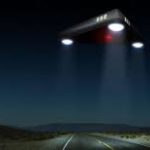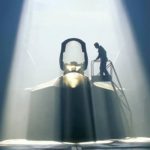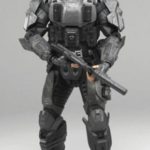Information on everything from astronauts to the largest of their Spaceships is here, organized by class. Inisfreean vessels are listed on a separate page, as they are vastly different in terms of size, function, & interiors.
–
Table of Contents:
- Conventional Vessels
- Unconventional Vessels
- Forward-deployable Troops
- Modes of Travel
–
Conventional Vessels
Space:
- Dreadnoughts/’Titans’: super-carriers and the heaviest of orbital bombardment platforms, many of them larger than most land-based cities
- Jump-ships: super-carriers designed to transport multiple Dropships and other smaller vessels across vast galactic distances
- Tankers: some of the largest unarmed transport ships (often hauling Helium from gas-giants)
- Carriers: same as aircraft carriers, but for Space
- Battleships: warship, large; a heavy warship of a type built chiefly in the late 19th and early 20th centuries, with extensive armor and large-caliber guns
- Cruisers: warship, medium; a relatively fast warship larger than a destroyer and less heavily armed than a battleship
- Frigates: warship, small; a warship with a mixed armament, generally heavier than a destroyer (in the U.S. Navy; some fleets’ frigates are smaller than destroyers) and of a kind originally introduced for convoy escort work
- Destroyers: warship, tiny; a small, fast warship, especially one equipped for a defensive role against submarines and aircraft
Aerospace:
- Beam-ships: the ‘flying saucers’ of the Pleiadians (though ‘beam-ship’ has become archaic)
- Bombers: just like the aircraft-originals, but Space-worthy
- Commercial Space-liners: just like a commercial-airline passenger-jet, but Space-worthy
- Cosmospheres: the early, spherical, UFO-like devices launched by the Russians
- Drones: unmanned aircraft
- Escape Pods: also known as ‘lifeboats’
- Fighter-jets: including those with only atmospheric capabilities
- ‘Flying Saucers’: all the many kinds of what are commonly called ‘U.F.O.s’
- Interceptors: fighter-jets designed to be faster, more maneuverable, and anti-missile capable
- Shuttles: sub-dropships rarely bigger than buses or small houses
- TR-3B: America’s attempt at making recovered ‘saucer’ technology work up to ~89% as well as the originals; these triangular aircraft were used as VTOL cargo transports, with variants developed for reconnaissance
- Trainers: very light & simple jets, typically unarmed but fighter-like, with room for 1 or 2 pilots
- Vimanas: flying mini-palaces, though there was a great variety of these pre-India aircraft
Space-to-land Amphibious:
- Dropships: ferrying large amounts of cargo, personnel, & vehicles from orbit to surface and back (modern ‘Amphibs’)
- Re-entry Vehicles: Escape Pods from primitive Space stations, rarely with any life-support systems
- Space Cruise-ships: like the one featured in The Fifth Element; some of them land and float
Land-based:
- BattleMechs: legged tanks, capable of operating on low- and zero-atmosphere worlds
- Infantry Fighting Vehicles (IFV): like Armored Personnel Carriers (APC) but with more firepower (example: Mass Effect’s M-35 ‘Mako’)
- Tanks: tracked tanks, capable of operating on low- and zero-atmosphere worlds (examples: Halo’s M-808-B Main Battle Tank, and StarCraft’s Terran Siege Tanks)
Various/Multiple-function:
- Tow/Tug/Wreck/Salvage: recovery vehicles & ships
–
Unconventional Vessels
Space-to-land Amphibious, and Others:
- Blimp-jet Hybrids: faster than blimps, and able to stay afloat for weeks (example: Lockheed Martin P-791)
- Death Stars: any of the sub-moon / planetoid-sized mobile Space stations
- Drop-pods: re-entry vehicles designed for a single person, typically for more-rapid insertion into active combat zones (example: Halo’s Single Occupant Exo-atmospheric Insertion Vehicle, informally referred to as the Human Entry Vehicle, drop pod, and the Egg)
- Fireflies: small cargo ships, usually owned by individuals
- Helicopter-jet Hybrids: faster than helicopters, while still providing VTOL, useful when mercury is not in sufficient abundance to provide for Repulsine-based systems (example: Sikorsky X-Wing)
- Observation Pods: airborne surveillance platforms, not stealthy enough for reconnaissance (example: Darwin IV’s Yma Hover-cone)
- Personal Helicopters: essentially just large drones you can ride like a flying surfboard (example: Lackner HZ-1 Aerocycle)
- Sub-orbital Accelerator/Launch/Parent Craft: aircraft designed to carry sub-orbital and orbital ‘vehicles’ up to higher altitudes for more-efficient launching into Space
- Time-ships: Spacecraft specifically designed for time-travel, typically with minimal presence
–
Forward-deployable Troops
Combatant:
- Infantry: ‘ground forces’ for liberations, invasions, holding territory, and ‘shows of force’
- Forward Observers: such as artillery scouts (though now more for orbital bombardments)
- Scout-Snipers: military sharpshooters which can also conduct reconnaissance
- Rangers/Reconnaissancemen: some of the most versatile and lethal troops
- Orbital-drop Shock-troopers (ODST): Army Airborne, but from Space; they jump a little higher
–
Non-combatant / Support:
- Agents: field personnel from government agencies, often acting as advisers, experts, & liaisons (example: the Men In Black (MIBs) )
- Astronauts: basic Space-going workers, such as scientists, sometimes functioning as pioneers
- Bodyguards: more formally known as ‘executive/private security’ or, rather vaguely, as ‘contractors’
- Colonists: permanent-population members (of established colonies) intended to spread their genes by traditional and/or alternative means of reproduction; their purpose is to maintain and/or expand a colony or colonies (not to be confused with Settlers)
- Engineers: construction crews, land-mine removal specialists, & more (some in the U.S. Navy are called ‘Sea-bees’)
- Explorers: similar to reconnaissance, but non-military (the bravest venturing into worm-holes)
- Explosive Ordnance Disposal: bombs, booby-traps, landmines, roadside bombs, and un-exploded munitions are handled by these troops
- Infiltrators: spies and others who blend in with exceptional stealth technology & training
- Interpreters: translators who factor in dialect and subtleties which non-locals would likely miss
- Medics: field healers; combat-EMTs below the level of medical/surgical doctors (called Corpsmen in the Marine Corps, as well as in the Colonial Marine Corps and the Space Marine Corps)
- Miners: experts in retrieving minerals and other valuable materials from within the solid crust of planets
- Radiomen: communications specialists (though radio technology is largely phased-out now)
- Retrieval Technicians: specialists in aircraft, Spacecraft, & pilot recovery –even when behind enemy lines, as well as the systematic destruction of sensitive technology so that enemy forces cannot recover or reverse-engineer it (examples: Para-rescue Jumpers, and U.F.O. Retrieval Team operators)
- Settlers: establish a colony or colonies; newcomers who start a local civilization/community (not to be confused with Colonists)
- Terraformers: experts in fine-tuning at least the surface conditions of a planet to make it more habitable for their kind and whatever they wish to farm outdoors there (the most advanced form of this profession involves helioforming; modifying not just worlds, but stars)
–
Modes of Travel
Crossing the vastness of Space can be done in a variety of ways. The following are listed in order of speed from slowest to fastest (relatively speaking; some technically aren’t moving at all, just skipping physical-space to “appear” at destinations).
- Conventional/Burn; basic primitive rocket engine exhaust pushing steadily forward, only at a uniformly-increasing rate once out of an atmosphere (when resistance almost entirely ends)
- Pulse; like a nuclear explosion out the back that pushes the craft forward, typically paired with inertial dampeners and other high-tech’ ways of ensuring the pushed ship goes a long way in an extremely specific direction
- Warp; bending Space around the ship until it is where its captain wishes it to be
- Trans-warp; anything that allows travel faster than what Starfleet warp-drives were capable of
- Quantum slipstream; “a narrowly-focused directed field that is initiated by manipulating the fabric of the space-time continuum using the starship’s navigational deflector array, creating a subspace tunnel, which is projected ahead of the vessel” (similar to Borg trans-warp conduits, though they made a permanent/persistent network of those that any ship could use even if a given ship had no high-tech’ / warp capabilities)
- The Webway; ancient artificial ever-changing subway-system-like network of hyperspace-related conduits typically only known about, let alone used by, powerful Space-faring reptilians and Eldar (Space Elves)
- Hyperdrive; Star Wars technology allowing for travel comparable to Webway speeds, if not even faster
- Thought-mode; Pleiadian method/technology that allowed for vast cosmic distances to be “skipped over” without having to go into warp or hyperspace or The Webway (possibly only possible for beings such as them; less physical, more ethereal/spiritual/advanced)
- Jump-gates; a.k.a. star-gates (gates to worlds in other star-systems, not literal gates that are stars) –which had to connect to another gate to function, thus placing those gates required travel methods such as warp-drives
- Stars; as literal stargates (you go into the star, and use a clever method of exiting out one of the linked stars) –only available to those permitted by the Elohim (Heaven itself, as a collective being of multiple Arch Angel / Ainur bodies), and, after ~2014, also requiring High King Auzdein von Himmler‘s permission
- Portal; like a star-gate but able to magically connect just about anywhere you use spell-casting to make it –and some portals are wide, known as rifts, and/or recurring, if not stable/indefinite (until someone with powerful magic closes them)
–
Video Player
00:00
00:00


















